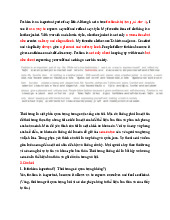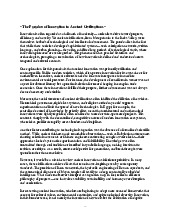
Preview text:
lOMoAR cPSD| 45734214
"The Architecture of Nostalgia: Memory as Place"
Nostalgia is not merely a longing for the past—it is a spatial emotion, a mental architecture built
from fragments of memory, emotion, and imagination. It is the mind’s way of inhabiting time as
if it were a place, reconstructing moments not as they were, but as they felt. In nostalgia,
memory becomes a cathedral—echoing with laughter, loss, and the soft light of things that once were. 🕰 Temporal Alchemy •
Nostalgia distorts chronology. It compresses years into seconds, and inflates seconds into eternity. •
It is not a faithful historian but a poetic architect—rebuilding the past with selective
grace, smoothing over pain, amplifying joy. •
The past becomes a sanctuary, not because it was perfect, but because it is safe from change.
🏠 Memory as Architecture •
Each nostalgic thought is a room: the scent of a childhood kitchen, the sound of a
summer night, the texture of old schoolbooks. •
These rooms are not static—they shift with mood, age, and context. What was once
bittersweet may become comforting; what was once joyful may turn melancholic. •
The architecture is recursive: we revisit the same memories, but they feel different each time. 🎭 Emotional Duality •
Nostalgia is both balm and blade. It soothes with familiarity but stings with absence. •
It reminds us of who we were, and by extension, who we are no longer. •
Yet it also affirms continuity—that we are the sum of our remembered selves.
🌍 Cultural Nostalgia •
Societies experience nostalgia collectively: retro fashion, vintage music, historical reenactments. •
These are not mere trends—they are attempts to reclaim identity in a world of rapid change. •
Nostalgia becomes resistance: a way to anchor meaning in an age of flux.
🧠 Neurological Echoes •
The brain stores emotional memories in complex networks. Nostalgia activates regions
tied to reward, emotion, and autobiographical recall. •
It is not passive recollection—it is active reconstruction, a creative act of selfhood.



